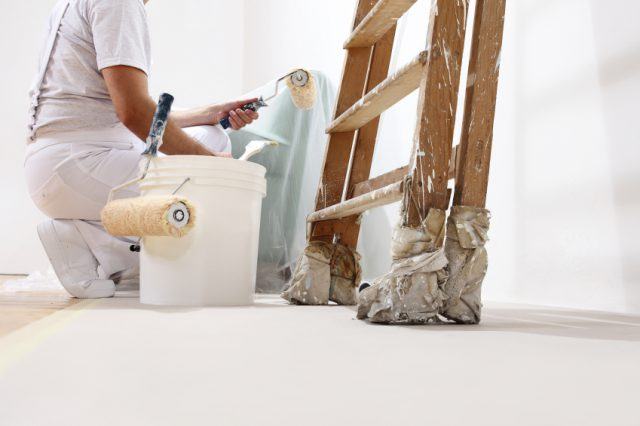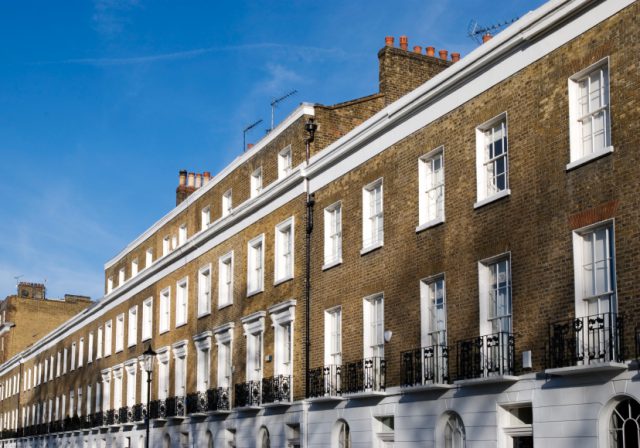The bank holiday is a perfect opportunity to spend some time decorating your rental property so that it is ready for new tenants in the summer. If you don’t know where to start, we have some advice for landlords on sprucing up your investment.
If you’re looking for new tenants around this time of year, now is the best time to take action and start some work on your property that will secure you reliable and respectful renters.
If you have long-term tenants in your property at present, the following tips will help you continue attracting the right type of renter when the time comes to market your property again.
Focus on durability
Every landlord wants to keep their tenants for as long as possible and avoid void periods. If your tenants are going to stay in your property for the long-term, it is vital that the fixtures and fittings you install are durable and repel the dreaded wear and tear.
If you have shorter-term tenancies (six months to a year), you shouldn’t have to redecorate between each tenant. Landlords should be prepared to renovate every three years, so tough features will ensure your property doesn’t become shabby during this time.
Although it is easy to forget this and focus on aesthetics instead, durability is the best way to secure good tenants and prevent you having to redecorate too often.
Plan, plan, plan
The longer you spend renovating your property, the longer it will be empty. Although it can take time to bring your investment back into a good condition, you should always plan to make sure your property won’t be vacant for long. If it takes you longer than expected to complete the work, Unoccupied Property Insurance will protect your asset.

Decorating Advice for Landlords this Bank Holiday
Before you start work, think about exactly what needs doing and how long this will take. Periodic inspections will give you an idea about what kind of condition the property is in during a tenancy, but sometimes problems only become clear once the tenant has left.
You should aim to begin work as soon as the tenant moves out, so plan ahead and get to work straightaway. If you need professional tradespeople in, book their time in advance and avoid having a lengthy void period.
Tackle wear and tear
Floors are the biggest victims of wear and tear in any property, as they receive the most physical contact. It is always worth spending a bit extra on thick and durable carpets that can withstand heavy treading and regular carpet cleans. Speaking to a reputable carpet retailer will help you determine which carpets are suitable for buy-to-let properties.
If possible, it is also a good idea to use tiles instead of wood or laminate, as they are stronger, resistant to infestations and easier to maintain. Dark tiles will keep rooms such as the kitchen and bathroom looking clean, while these areas particularly benefit from having tiled floors, as they are prone to damp and therefore mould.
Always be mould-proof
Mould is one of the biggest problems that landlords face – particularly as it poses serious health risks to your tenants. If mould does build up, it can be extremely expensive and difficult to remove or resolve. Always advise your tenants to open windows and doors throughout the property, and invest in a humidistat extractor fan to avoid moisture build-up in the bathroom.
Prevention is definitely the best cure when it comes to mould, so always use anti-mould products if possible.
Choose the right colours
While we all know that neutral colours are best for rental properties, painting the rooms in light tones can cause problems later down the line – if you don’t want to be decorating between every tenancy, it is better to choose a mid-toned brown/grey hue that will still appeal to all tenants, but won’t look as grubby after wear and tear.
If you do decide that some rooms need to appear brighter, light shades will help to entice prospective tenants. A good idea is to keep a tin of paint for when tenants leave so that you can touch up small areas.
In rooms decorated with mid-tone colours, good lighting will go a long way to create an illusion of space.
Decorate for your target tenant
Realistically, you should focus on fixtures and fittings that will give you a return on investment. For example, if you only charge £200 per month for your property, your tenants won’t be expecting state-of-the-art goods, and a £10,000 renovation project won’t be worth it.
However, the best way to budget is to consider exactly what your tenants are looking for. If you have a one-bedroom flat that you’re marketing to young professionals, they will be looking for something completely different to a family with children searching for a four-bedroom house. It’s important to remember who you are trying to please and spend money accordingly.
Tax advice for landlords
Remember that if you are spending money on redecorating, all costs can be offset against your tax bill. As maintenance comes under business costs, any expense is considered allowable and you can offset the cost against your rental income. Keep all receipts for any expenses!
However, be aware that improvements to the property – for example, swapping a laminate kitchen worktop for a granite one – are not covered by this rule.
This guide will help you get your taxes in order: https://www.justlandlords.co.uk/news/government-produces-online-tax-tutorial-landlords/
Avoid personal touches at all costs
This is a golden rule when decorating rental properties. Remember that, even if the home used to be yours, someone else is going to be living there and will want to make the space their own. Tenants are more likely to respect your property and want to stay there for the long-term if they can settle in and feel comfortable.
Every personal touch that you add is a potential repellent to tenants, so always avoid bright colours, ornaments and pictures. Try to keep everything neutral and allow your tenants to add their own touch. This will also save you money, as you can keep things as simple as possible!










